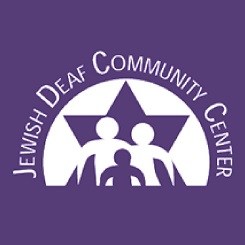by Ryan Teitma
Reprinted from Jewish Exponent – January 11, 2006
Nadine Miller comes to Congregation Adath Jeshurun Synagogue in Elkins Park each Thursday and teaches the preschool children how to sign. By all accounts, they are catching on quickly.
Every Thursday, the students at Congregation Adath Jeshurun’s preschool in Elkins Park file out of their classroom and make the trek down the hall to visit Nadine Miller. In just 20 minutes, she continues teaching the class a new language — quite a feat for a group of children under 5 who are still mastering the intricacies of their native tongue.
Miller is teaching them sign language, and after working on three songs and doing an exercise with partners, the children head back to their room, having mastered a few new signs. Then another class greets Miller and the same lesson is taught to them.
The young teacher began instruction in sign language at Adath Jeshurun on Oct. 5, and her lessons will continue till the end of the school year. From 9 a.m. to noon, she provides school members with this basic but crucial kind of instruction.
Miller is a hearing graduate of Gallaudet University in Washington, D.C., where she earned a master’s degree in deaf education, and she also teaches deaf and hard of hearing students at the Bucks County Intermediate Unit.
She started with the synagogue’s youngsters — the oldest students being age 5 — by teaching basic signs, such as “please” and “thank you.”
“We use those signs each time,” she said.
She has added a few more with each lesson, and the children supplement their vocabulary through the repetition. “We just keep building on the phrases they already know,” she noted. She added that she hopes the students will have 120 signs at their disposal by the end of the year.
The school’s teachers continue the effort by using the signs in class as well, so that the students get a chance to practice their new vocabulary in different settings.
Teacher Michelle Ravitch noted that the sign language instruction isn’t just an isolated effort during school time; it’s something the kids demonstrate for their parents at home. “And so the parents learn along with them,” she noted.
Gavi Miller, executive director of the synagogue and no relation to Nadine Miller, said that the school is always looking for “new and innovative program ideas.”
“One of the hot things in early education is teaching sign language [as part of] language acquisition,” he said.
A significant value of sign language is that it can be taught to children who are pre-verbal. They can then gain the means to communicate before they can even talk, said Nadine Miller. She added that a 12-month-old child can easily distinguish between signs, even when unable to use words.
Sign language is becoming an increasingly popular trend for parents with pre-verbal children. The newfound communication skills are often a relief to parents, said Miller, who gain a new way to understand the needs and wants Ravitch’s class has a student who is not a native English speaker, she said, and he’s used the signs to help him more easily communicate with teachers and classmates. And all the students gain a sense of satisfaction when they use the signs and the teachers understand them, said Ravitch.
Words like “eat,” “drink,” “juice” and “milk” are just some of the signs that students learned during a recent lesson, all of them words that make frequent appearances in a pre-school classroom. “She teaches us really everyday stuff that we can use in class,” said Ravitch of Miller.
For the older children in the classes, learning to sign is “learning another culture,” said Miller. And the students will have a chance to practice their new language skills in the spring as Miller hopes to bring in fellow preschoolers from the Pennsylvania School for the Deaf to practice signing at Adath Jeshurun.




